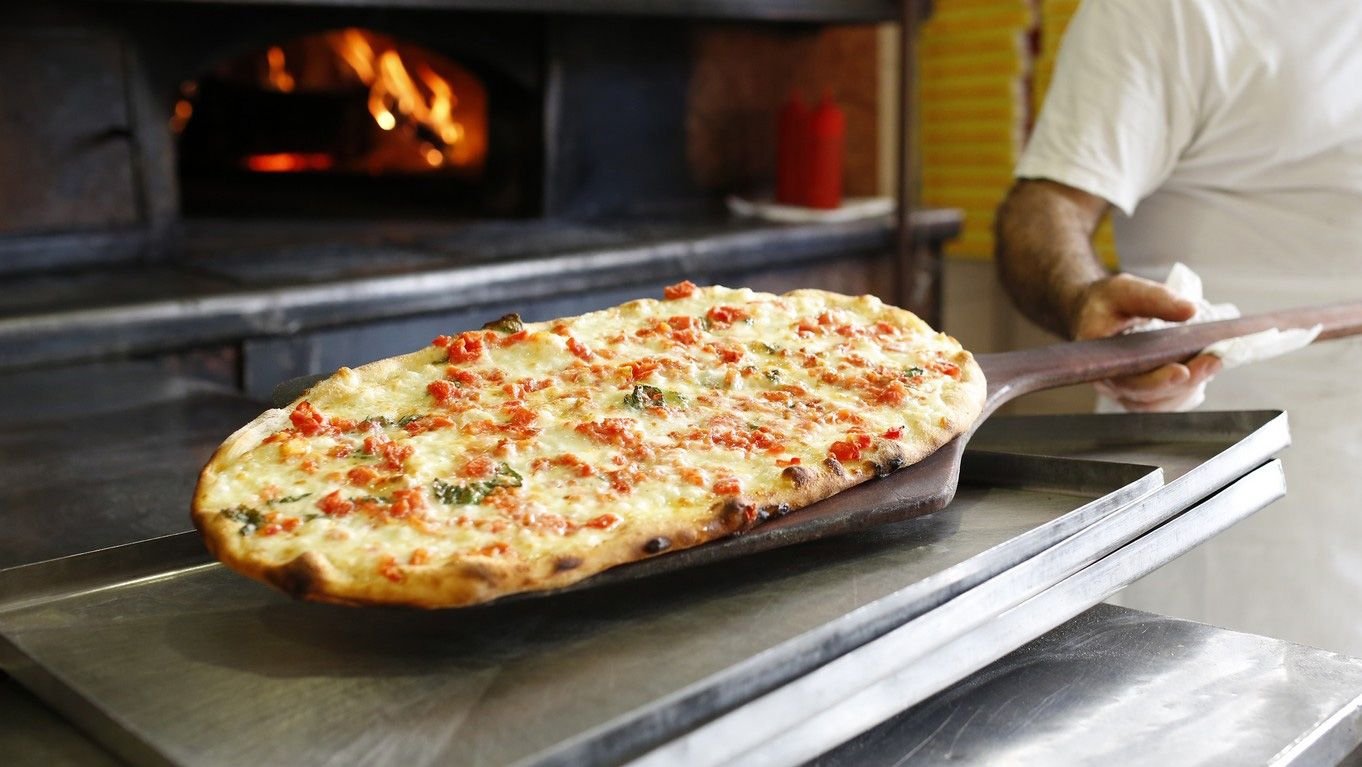Dough preparation is a critical aspect of pizza-making, influencing the texture, flavor, and quality of the final product. From kneading techniques to fermentation processes, every step plays a crucial role in developing a dough that is light, airy, and full of flavor. This article explores various dough preparation techniques and fermentation processes used in traditional Italian pizza-making, highlighting their importance in creating the perfect pizza crust.

Kneading Techniques
Hand Kneading
Hand kneading is a traditional method that involves using the hands to mix and work the dough manually. This technique requires skill and experience to achieve the right consistency and texture:
- Process: Flour and water are combined to form a rough dough, which is then kneaded on a clean, floured surface. The dough is stretched, folded, and pressed repeatedly to develop gluten and achieve elasticity.
- Benefits: Hand kneading allows the baker to feel the dough’s texture and adjust moisture levels as needed. It also promotes even distribution of ingredients and develops gluten for a chewy, stretchy crust.
Stand Mixer
Stand mixers are popular in commercial kitchens and homes for their efficiency and consistency in kneading dough:
- Process: A dough hook attachment is used to mix and knead the ingredients. The mixer’s speed and duration are controlled to achieve the desired dough texture.
- Benefits: Stand mixers save time and effort compared to hand kneading. They ensure thorough mixing and kneading, resulting in a uniform dough consistency suitable for large-scale production.
Fermentation Processes
Room Temperature Fermentation (Bulk Fermentation)
Room temperature fermentation involves allowing the dough to rise at ambient temperatures, typically between 68-72°F (20-22°C):
- Process: After kneading, the dough is placed in a lightly oiled bowl, covered with a damp cloth, and left to ferment for several hours. During fermentation, natural yeasts in the environment and within the dough metabolize sugars, producing carbon dioxide gas that leavens the dough.
- Benefits: Room temperature fermentation develops complex flavors and enhances dough elasticity. It allows for a slow, controlled rise that improves texture and digestibility.
Cold Fermentation (Retardation)
Cold fermentation involves refrigerating the dough for an extended period, usually 1-3 days:
- Process: After kneading, the dough is divided into balls, lightly oiled, and placed in airtight containers or wrapped in plastic. It is then refrigerated at temperatures between 39-45°F (4-7°C). Cold temperatures slow down yeast activity, resulting in a longer, more gradual rise.
- Benefits: Cold fermentation develops deeper flavors and improves dough structure. It also enhances the dough’s extensibility, making it easier to shape and stretch. The slow fermentation process produces a more pronounced crust and a chewy, flavorful interior.
Dough Maturation
Resting Periods
After fermentation, the dough undergoes resting periods to relax gluten and improve its handling properties:
- Bulk Proofing: The dough rests in a bulk form after kneading and before shaping. This allows gluten strands to relax and redistribute, making the dough easier to shape without springing back.
- Final Proofing: After shaping into pizza rounds, the dough undergoes final proofing. This step allows the dough to rise one last time before baking, contributing to a light and airy crust.
Stretching and Shaping
Stretching and shaping the dough is crucial to achieving the desired thickness and texture:
- Hand Stretching: Experienced pizza makers use their hands to gently stretch and press the dough into a round shape, leaving a slightly thicker edge (cornicione) for the crust.
- Rolling Pin: Some prefer to use a rolling pin to achieve a consistent thickness throughout the dough. Care must be taken to avoid overworking the dough, which can deflate air bubbles and affect texture.
Importance in Pizza-Making
Texture and Flavor
Proper dough preparation and fermentation techniques are essential for creating a pizza crust with the right texture and flavor profile:
- Texture: Well-kneaded and properly fermented dough results in a crust that is light, airy, and chewy with a crispy exterior.
- Flavor: Fermentation enhances the dough’s flavor complexity, developing subtle tanginess and depth that complement pizza toppings.
Digestibility
Longer fermentation periods improve dough digestibility by breaking down complex sugars and gluten proteins:
- Gluten Breakdown: Extended fermentation breaks down gluten, making it easier to digest for individuals with gluten sensitivities.
- Nutrient Availability: Fermentation increases the availability of nutrients in the dough, improving overall digestibility and nutrient absorption.
Conclusion
In conclusion, dough preparation techniques and fermentation processes are integral to crafting authentic and flavorful Italian pizzas. Whether hand-kneaded for a personal touch or mixed in a stand mixer for consistency, the method chosen significantly impacts dough texture and crust quality. Similarly, choosing between room temperature and cold fermentation affects flavor development, dough structure, and the overall baking experience. Understanding these techniques allows pizza makers to tailor their dough to achieve the desired characteristics, ensuring every pizza crust is a perfect balance of crispy, chewy, and delicious. Embrace the art of dough preparation in pizza-making, and savor the results of a well-crafted crust that elevates your pizza experience.











